
Dili is the capital and largest city of East Timor. It lies on the northern coast of the island of Timor, in a small area of flat land hemmed in by mountains. The climate is tropical, with distinct wet and dry seasons. The city has served as the economic hub and chief port of what is now East Timor since its designation as the capital of Portuguese Timor in 1769. It also serves as the capital of the Dili Municipality, which includes some rural subdivisions in addition to the urban ones that make up the city itself. Dili's growing population is relatively youthful, being mostly of working age. The local language is Tetum; however, residents include many internal migrants from other areas of the country.

Baucau is a municipality, and was formerly a district, of East Timor, on the northern coast in the eastern part of the country. The capital is also called Baucau. The population of the municipality is 111,694 and it has an area of 1,506 km2.
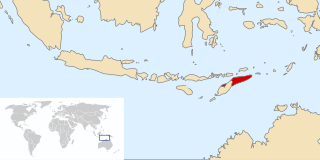
East Timor was a province of Indonesia between 1976 and 1999, during the Indonesian occupation of the country. Its territory corresponded to the previous Portuguese Timor and to the present-day independent country of East Timor.

Manatuto is a city in Manatuto Municipality, East Timor.

Dili Airport, officially Presidente Nicolau Lobato International Airport, and formerly Comoro Airport, is an international airport serving Dili, the capital city of East Timor. Since 2002, the airport has been named after Nicolau dos Reis Lobato (1946–1978), an East Timorese politician and national hero.

Civil Aviation Timor-Leste is a government organization, part of the Department of Transport & Communications in the Ministry of Transport and Communications (MTC) to promote the safety, efficiency and regularity of aviation services in Timor Leste. The civil aviation division also has the responsibility for overall planning, implementation and operation of the aviation services in East Timor.
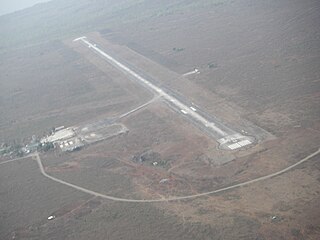
Baucau Airport, formerly Cakung Airport, is an unattended and mostly unused airport near Baucau, East Timor. It is the largest airport in East Timor and has a much longer runway than Dili's Presidente Nicolau Lobato International Airport, long enough to handle large commercial airliners.

Oecusse Airport, officially Oecusse Route of the Sandalwood International Airport, and formerly Palaban Airport, is an international airport serving Pante Macassar, the capital city of the Oecusse Special Administrative Region of East Timor.
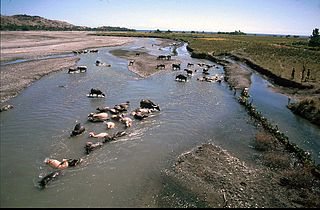
The North Laclo River is the longest river in East Timor. It flows northeast into Wetar Strait, reaching the coast near the city of Manatuto. It has no connection to the South Laclo River, which flows into the Timor Sea.
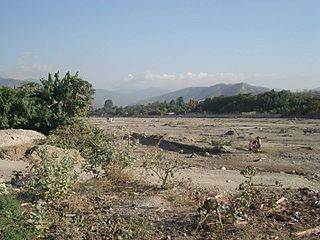
The Comoro River is a river in East Timor. It flows north into Ombai Strait, reaching the coast in the north western suburbs of the capital, Dili. In its lower reaches, it is the main and largest of Dili's four major rivers.
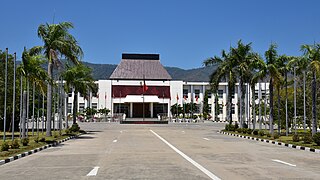
The Nicolau Lobato Presidential Palace is the official workplace of the President of the Democratic Republic of Timor-Leste. It is located in Avenida Presidente Nicolau Lobato, Bairro Pite, a suco of Dili, the capital city of East Timor, and has been the workplace of the President since 2009.
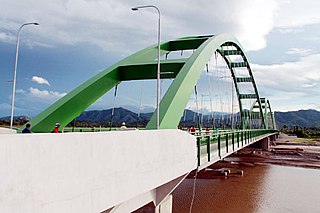
The Noefefan Bridge is a two-lane road bridge over the Tono River in the suco of Lifau, a village in Oecusse, the East Timorese exclave on the north western coast of Timor. As of 2017, when the bridge was inaugurated, it was the largest bridge ever built in East Timor. It connects several isolated communities west of the river with Pante Macassar to its east.

Transportes Aéreos de Timor or TAT was an airline of the then colony of Portuguese Timor, headquartered in Dili. It operated between 1939 and 1975.

The Hinode Bridge is a two-lane road bridge in the suco of Comoro, a western suburb of Dili, capital city of East Timor. It was built by a Japanese company, Tobishima Corporation, between 2016 and 2018, with grant aid funding from the Government of Japan.
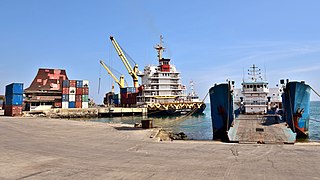
The Port of Dili is a seaport in Dili, East Timor. Prior to 30 September 2022, it was the main and only international port of entry to East Timor. On that day, its container operations were transferred to the Tibar Bay Port. Since then, the Port of Dili's facilities have been open only to domestic passenger ships and cruise ships carrying international tourists.

The President B. J. Habibie Bridge is a two-lane road bridge in the suco of Bidau Santana, an inner suburb of Dili, capital city of East Timor. It is named after B. J. Habibie, the President of Indonesia who decided in 1999 to hold that year's referendum on whether East Timor would become independent of Indonesia.

The CPLP Bridge is a pair of two-lane road bridges in the suco of Comoro, a western suburb of Dili, capital city of East Timor.
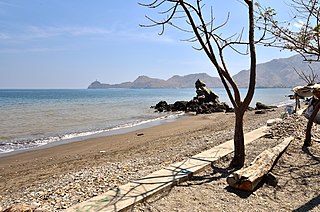
The Bay of Dili is a bay on the north coast of East Timor adjacent to Dili, its capital city. The bay forms part of Ombai Strait, which separates the Alor Archipelago from the islands of Wetar, Atauro, and Timor in the Lesser Sunda Islands.






















